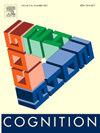Creativity, the fountain of youth: Association between creativity and semantic memory networks across the lifespan
IF 2.8
1区 心理学
Q1 PSYCHOLOGY, EXPERIMENTAL
引用次数: 0
Abstract
Creativity relies on the ability to make new associations between concepts stored in our semantic memory in order to create new and effective ideas in a specific context. Recent studies showed that creative people are characterized by more flexible semantic memory structures, which facilitate novel associations between concepts. On the other hand, older adults exhibit more rigid semantic memory structures and ability to access these structures, raising questions about how the relationship between semantic memory networks and creativity may change with ageing. Can creativity support a more flexible reconstruction of semantic memory network during ageing? To investigate this, 77 older adults (M = 77.8 years, SD = 4.63) and 81 younger adults (M = 20.3 years, SD = 1.71) completed four verbal production tasks (i.e., two verbal fluency and two free association tasks), from which semantic memory networks were estimated. Moreover, two divergent thinking tasks (i.e., Alternative Uses Task) were used to assess creative performance. The results showed that the typical maturation of older adults' semantic memory network is associated with a decrease in creative performance in comparison to younger adults. On the other hand, higher creative older adults exhibited preservation of their overall semantic memory flexibility in comparison to lower creative older adults, similar to lower creative young adults. Overall, this study highlights the potential protective role of creativity in supporting active ageing through its propaedeutic role in maintaining a flexible organization and access to semantic memory structures.
创造力,青春之泉:一生中创造力与语义记忆网络的关系
创造力依赖于在我们的语义记忆中存储的概念之间建立新联系的能力,以便在特定的环境中创造新的有效的想法。最近的研究表明,有创造力的人具有更灵活的语义记忆结构,这有助于概念之间的新联系。另一方面,老年人表现出更严格的语义记忆结构和访问这些结构的能力,这就提出了语义记忆网络和创造力之间的关系如何随着年龄的增长而变化的问题。在衰老过程中,创造力能否支持语义记忆网络更灵活的重建?为了研究这一点,77名老年人(M = 77.8岁,SD = 4.63)和81名年轻人(M = 20.3岁,SD = 1.71)完成了4个言语产生任务(即2个言语流畅性任务和2个自由联想任务),并据此估计了语义记忆网络。此外,两个发散思维任务(即替代用途任务)被用来评估创造性表现。结果表明,与年轻人相比,老年人语义记忆网络的典型成熟与创造性表现的下降有关。另一方面,与创造力较低的老年人相比,创造力较高的老年人表现出整体语义记忆灵活性的保存,这与创造力较低的年轻人相似。总的来说,这项研究强调了创造力在支持积极衰老方面的潜在保护作用,通过它在维持灵活的组织和获取语义记忆结构方面的促进作用。
本文章由计算机程序翻译,如有差异,请以英文原文为准。
求助全文
约1分钟内获得全文
求助全文
来源期刊

Cognition
PSYCHOLOGY, EXPERIMENTAL-
CiteScore
6.40
自引率
5.90%
发文量
283
期刊介绍:
Cognition is an international journal that publishes theoretical and experimental papers on the study of the mind. It covers a wide variety of subjects concerning all the different aspects of cognition, ranging from biological and experimental studies to formal analysis. Contributions from the fields of psychology, neuroscience, linguistics, computer science, mathematics, ethology and philosophy are welcome in this journal provided that they have some bearing on the functioning of the mind. In addition, the journal serves as a forum for discussion of social and political aspects of cognitive science.
 求助内容:
求助内容: 应助结果提醒方式:
应助结果提醒方式:


